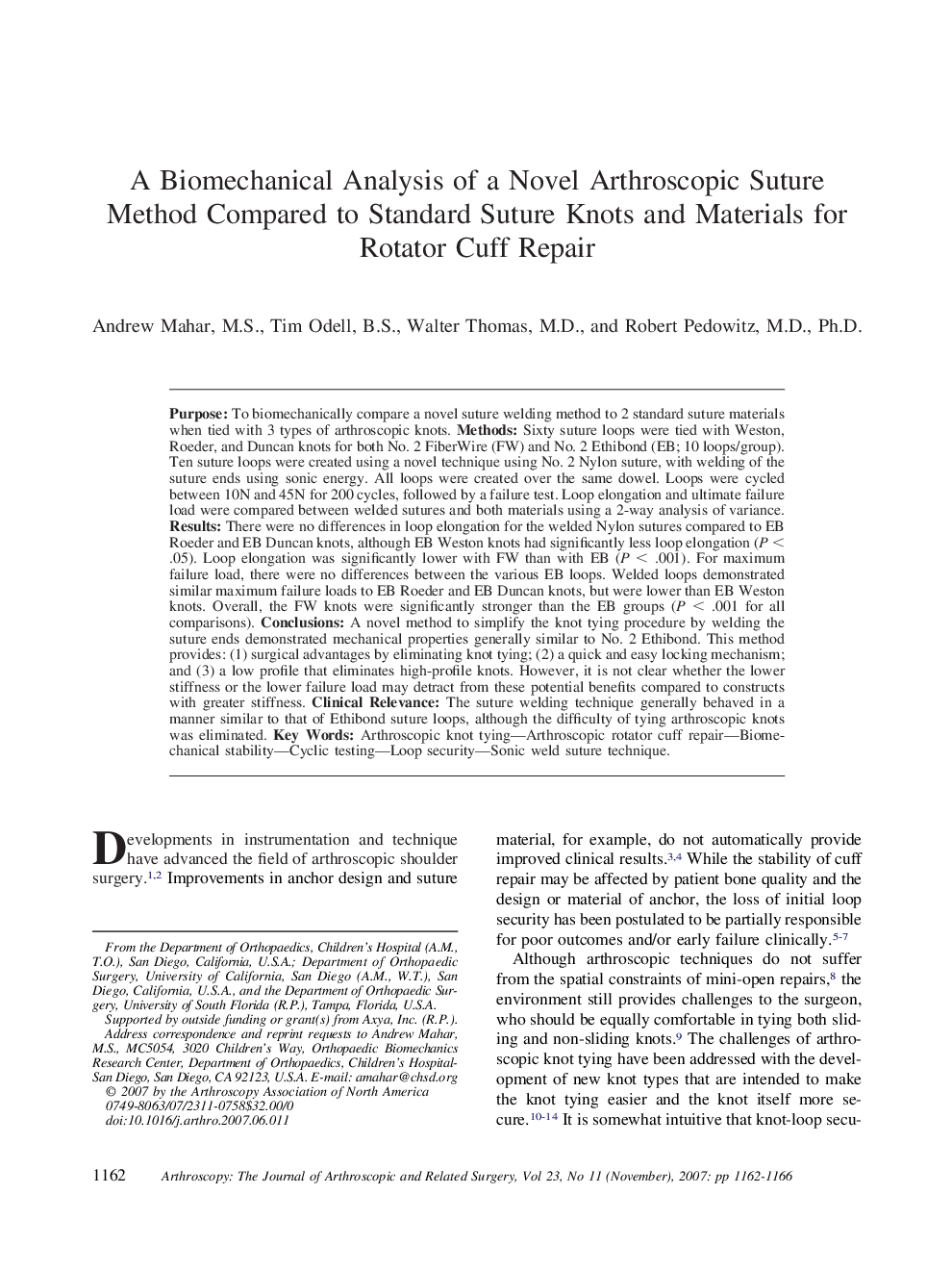| کد مقاله | کد نشریه | سال انتشار | مقاله انگلیسی | نسخه تمام متن |
|---|---|---|---|---|
| 4047424 | 1603591 | 2007 | 5 صفحه PDF | دانلود رایگان |

Purpose: To biomechanically compare a novel suture welding method to 2 standard suture materials when tied with 3 types of arthroscopic knots. Methods: Sixty suture loops were tied with Weston, Roeder, and Duncan knots for both No. 2 FiberWire (FW) and No. 2 Ethibond (EB; 10 loops/group). Ten suture loops were created using a novel technique using No. 2 Nylon suture, with welding of the suture ends using sonic energy. All loops were created over the same dowel. Loops were cycled between 10N and 45N for 200 cycles, followed by a failure test. Loop elongation and ultimate failure load were compared between welded sutures and both materials using a 2-way analysis of variance. Results: There were no differences in loop elongation for the welded Nylon sutures compared to EB Roeder and EB Duncan knots, although EB Weston knots had significantly less loop elongation (P < .05). Loop elongation was significantly lower with FW than with EB (P < .001). For maximum failure load, there were no differences between the various EB loops. Welded loops demonstrated similar maximum failure loads to EB Roeder and EB Duncan knots, but were lower than EB Weston knots. Overall, the FW knots were significantly stronger than the EB groups (P < .001 for all comparisons). Conclusions: A novel method to simplify the knot tying procedure by welding the suture ends demonstrated mechanical properties generally similar to No. 2 Ethibond. This method provides: (1) surgical advantages by eliminating knot tying; (2) a quick and easy locking mechanism; and (3) a low profile that eliminates high-profile knots. However, it is not clear whether the lower stiffness or the lower failure load may detract from these potential benefits compared to constructs with greater stiffness. Clinical Relevance: The suture welding technique generally behaved in a manner similar to that of Ethibond suture loops, although the difficulty of tying arthroscopic knots was eliminated.
Journal: Arthroscopy: The Journal of Arthroscopic & Related Surgery - Volume 23, Issue 11, November 2007, Pages 1162–1166